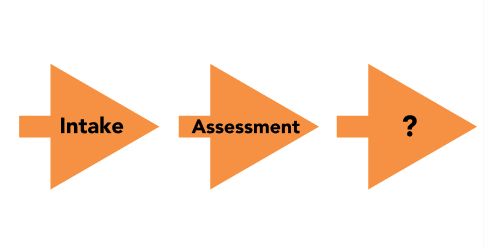Aligning Assessment and Action in Community Supervision

The RNR Dilemma
Most probation and parole agencies are well-versed in the principles of Risk-Need-Responsivity (RNR). They use validated assessment instruments to evaluate each individual’s likelihood of reoffending and identify dynamic criminogenic needs. These tools embody evidence-based practices. Research demonstrates that matching the level of intervention to an offender’s assessed risk and targeting their specific criminogenic needs yields the greatest reductions in recidivism.
Criminogenic needs are the factors in a person’s life (like antisocial thinking, substance abuse or family instability). When these needs are addressed, the likelihood of reoffending is reduced. Despite the insights that such assessments provide, however, officers can find themselves defaulting to generic supervision strategies — often a result of high caseloads, limited program options or insufficient tools. This can lead to inefficiencies and missed opportunities for behavior change. Research warns that emphasizing surveillance (e.g. frequent check-ins or stricter rules) without accompanying treatment can make outcomes. Conversely, combining supervision with targeted programming is far more effective at reducing recidivism than supervision alone.
The disconnect between gathering risk-need data but struggling to translate that data into individualized case plans is the RNR dilemma: the principles are sound, yet the practical impact stalls out unless insights are converted into interventions.
The Responsivity Gap
A typical agency workflow might look like the graphic below: intake is followed by a risk/need assessment, which generates a risk score and identifies needs across various domains. At this point, the logical next step would be to connect those specific needs to specific interventions. Yet this is where many workflows hit a responsivity gap: after assessment, it’s unclear “What’s next?” in terms of programming. This gap represents a disconnect between “knowing” and “doing.”

The term “responsivity” in RNR refers to the idea that interventions should be tailored to the learning style, motivation, abilities and strengths of the individual. When that doesn’t happen, client engagement often declines. On the other hand, individuals are often more motivated to engage when the content of supervision aligns with their specific needs and goals.
To truly close the responsivity gap, agencies need a way to map assessment data to action steps in a consistent and quick manner. Doing so would also likely boost client cooperation: clients respond better when interventions feel relevant to their personal circumstances.
Bridging The Gap
Many agencies face a familiar challenge: while assessments identify risks and needs, translating that data into personalized, effective interventions often falls short. The Change Companies’ Atlas bridges this critical gap by helping agencies move from insight to action — connecting assessment results directly to programming tailored to each individual’s risks, needs and responsivity factors.

Evidence-based, behavioral health Interactive Journaling® curricula are available digitally on Atlas. Atlas can save staff time while supporting fidelity to evidence-based practices.
Ready to see what Atlas can do for your program? Visit our website to schedule a personalized demo today. Learn more about Atlas →
Provide your information below for a complete overview of Atlas for your setting.
